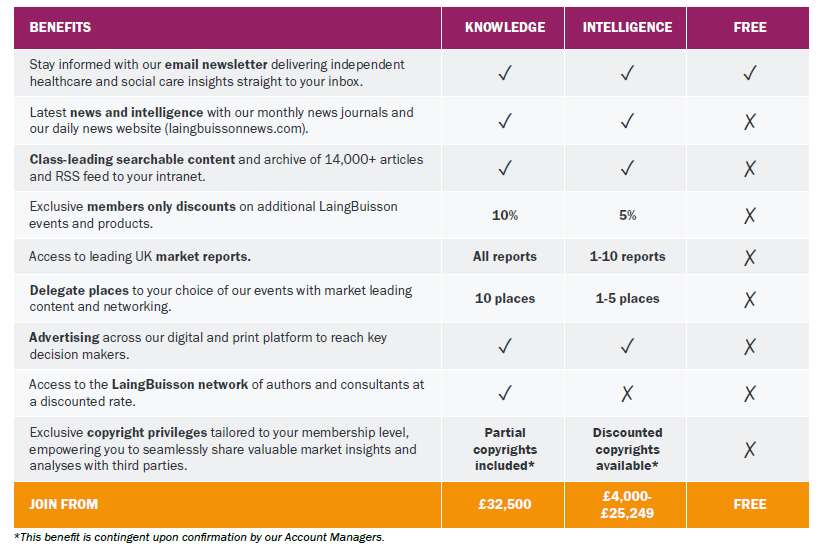
Longest NHS waiting lists for a generation add fuel to post-pandemic private healthcare recovery
London, 26 May 2023
The fifth edition of LaingBuisson’s Private Healthcare Self-Pay UK Market Report has been launched today. It shows a continuing growth in interest in private healthcare and a bounce back since the Covid-19 pandemic.
The cycle of growth (and decline) in self-pay treatment has historically tended to follow the UK economic cycle. However, Covid-19 has had a much more pronounced impact on self-pay activity since early 2020, leading into the current situation where NHS access appears to be over-riding concerns around economic impact.
As the cost-of-living bites and disposable incomes reduce, LaingBuisson has observed a growing interest in self-pay funded procedures. This is most likely fuelled by long NHS waiting lists, which were at 7.2 million at the end of December 2022, and rising. For many, there is a growing realisation that the NHS continues to be challenged in its ability to meet elective treatment demands. This is also reflected in waiting times for diagnostic tests, which have also increased.
Whilst analysing prices of self-pay and cosmetic procedures, LaingBuisson has seen that providers’ have a number of strategies for pricing. Some providers have regionalised or harmonised their pricing structure across the UK. For other providers, local pricing still underpins their approach, with localism a large factor for consumers. There is little evidence of a ‘race to the bottom’ in price competitiveness, analysis of average pricing of the highest volume self-pay and cosmetic surgery procedures shows that average prices have shifted upwards, but below overall Inflation.
Despite the growing interest in self-pay, NHS Private Patient Units (PPUs) are potentially missing an opportunity to compete with the independent sector on a local level by capitalising on their access to high quality NHS care, although some PPUs are making efforts to attract self-pay customers.
However, while future projections appear sound, the scale of future growth is difficult to estimate as there are constraints on the private sector’s ability to expand capacity – primarily related to staffing and resourcing.
Report author, Liz Heath said:
“NHS waits, increasing media coverage around patients choosing private options and treatment restrictions have driven wider interest in private healthcare, and the independent sector has seen higher volumes of patients willing to pay privately year-on-year. Forward projections are always difficult to make, but based on the recent growth trajectory, all indicators are that self-pay growth will continue.
“There are signs of some recovery in NHS private patient revenues, but these are very variable and may depend on geography, the existence of dedicated private patient beds and local pressures. We have noted that a number of NHS Trusts have taken the opportunity to re-evaluate their private patient offer, particularly for self-pay patients, and this is reflected in much wider availability of information and prices for procedures, including cosmetic surgery, within NHS private patient services. Therefore, it is clear that some Trusts are very well-placed to optimise the opportunity to recover private patient income in the future. Many Trusts report optimism about the future prospects for their private activity growth overall.
“Long term, there are favourable signals for growth in private spending on acute medical care in the UK, as individuals, companies, and overseas customers have strong interest in the private healthcare product and its capabilities across the healthcare spectrum. However, the strength of growth is likely to depend on the ability of providers to convert interest into realised demand, and effectively target varied customer needs.”






